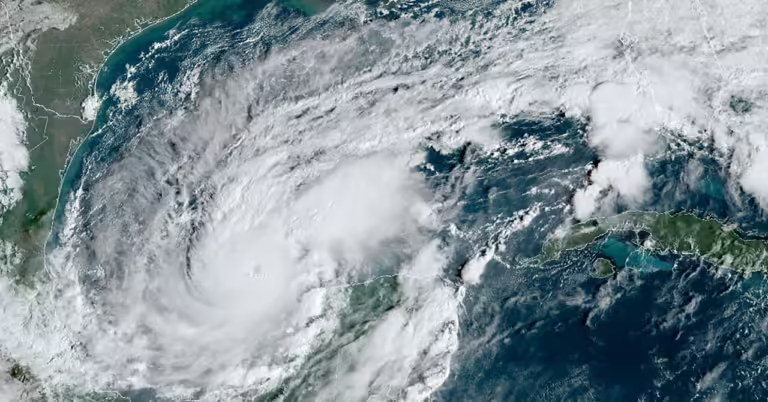Milton’s huge storm surge also highlighted the growing dangers posed by water. More powerful hurricanes are creating more storm surge due to rising sea levels. These “hurricanes on steroids,” as Olson calls them, are also dumping significant amounts of rain inland, similar to what Hurricane Helen did in North Carolina late last month. According to the National Hurricane Center, from 2013 to 2022, flooding from heavy rains accounted for a whopping 57% of hurricane deaths, with storm surge accounting for an additional 11%. Wind contributed only 12%.
The International Hurricane Research Center is known for its “Wall of Wind,” a hangar of 12 giant yellow fans that can generate winds of 157 miles per hour to test the resiliency of building materials. It now has a $13 million federal grant to design and prototype a new facility with 200 mph fans and a 500-meter wave pool to test the effects of windy, wet hurricanes.
“It’s the real world. It’s not just the wind, it’s not just the water, it’s not just the waves. It’s all three,” says Olson.
Some meteorologists say a completely different scale is needed. Carl Schreck, a research scientist at the University of North Carolina, proposed a category 1-5 scale based on sea level pressure to better capture water. Low pressure drives both wind speed and storm size, and larger storms tend to have bigger waves and more rain. Category 5 is a hurricane with a pressure less than 925 millibars. By this measurement, Milton would have remained in Category 5 through mid-Wednesday, rather than oscillating between Category 4 and 5.
“Pressure is easier to measure and more predictable, damage is more important, but the NHC is inert and tied to the current system and believes that unless there is a silver bullet, changing it will confuse people. ” said Schreck. . “And there is no silver bullet.”
No single number can capture the full impact of a hurricane. It made landfall in Florida as a Category 4, but was evidenced by Helen, which dumped “biblical” rain hundreds of miles inland in Georgia, South Carolina, and North Carolina. The storm killed more than 200 people, half of them in western North Carolina, where mountain valleys brought rain and caused devastating flooding. The effects were further exacerbated by a tropical storm that dumped historic rainfall in the Carolinas two days before Helen.
Predictions before Helen’s strike had predicted that its rainfall would be higher than that of hurricanes Francis and Ivan, which dumped up to 18 inches of rain on parts of North Carolina in 2004, triggered 400 landslides and killed 11 people. ” was compared. He also cited and warned about the record-breaking floods of 1916. “The impact would be life-threatening.” The storm that occurred two days before Helen was described as a “once-in-a-millennium event”. But the fact that so many people still died shows a “breakdown in communication” between the storm warning system and the public, said Schreck, who lived in Asheville and was without power and water for days. says.
He also helped develop the “enhanced rainfall” scale, where a Category 5 event dumps five times the amount of rain that falls on the area on average once every two years, and a Category 4 event dumps four times as much rain. did. The predicted rainfall would have made Helen an extreme Category 3 rainstorm in the mountains of North Carolina, rather than a Category 4 hurricane on the Florida coast.
(Tag translation) Science

